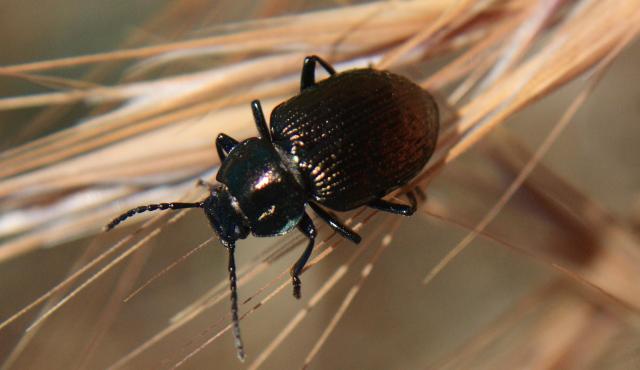A range of teacher professional learning programs will be developed to accompany the Biodiversity of the Western Volcanic Plains online outreach...

Ground Beetle
Unknown sp.
Females deposit 30-600 eggs into the soil. Undergoes complete metamorphosis meaning that there are four distinct stages in the lifecycle. Most are nocturnal.
| Details | Description |
| Type | Invertebrate |
| Group | Insect - Beetle |
| Identifying Characteristics | |
| Distinctive Markings | Flattened body shape and ridged forewings. |
| Diet | Carnivore. Predatory, feeding on small invertebrates including insects, slaters and worms. |
| Habitat | Terrestrial habitats, found under the bark of trees, amongst foliage, under rocks and fallen logs, in crevices in the ground and around the edges of waterways. |
| Native Status | Native to Australia |
| Taxonomy | |
| Phylum | Arthropoda |
| Class | Insecta |
| Order | Coleoptera |
| Family | Carabidae |
| Genus | Unknown |
| Species | sp. |

Distribution maps indicate current and historic locations where species have been sighted.
Source: Atlas of Living Australia
| Conservation Status | |
| DEPI Advisory List | Not listed |
| FFG Act | Not listed |
| EPBC Act | Not listed |
The conservation status of species is listed within Victoria and Australia.
The Department of Environment and Primary Industry (DEPI) Advisory List consists of non-statutory advisory lists of rare or threatened flora and fauna within Victoria.
The Flora and Fauna Guarantee Act 1988 (FFG Act) lists threatened species in Victoria. Under the Act, an Action Statement is produced for each listed species.
The Environment Protection and Biodiversity Conservation Act 1999 (EPBC Act) is the Australian Government’s key piece of environmental legislation, listing nationally threatened native species and ecological communities.



